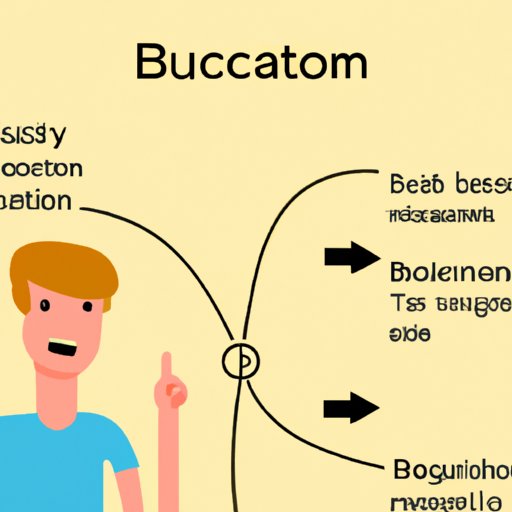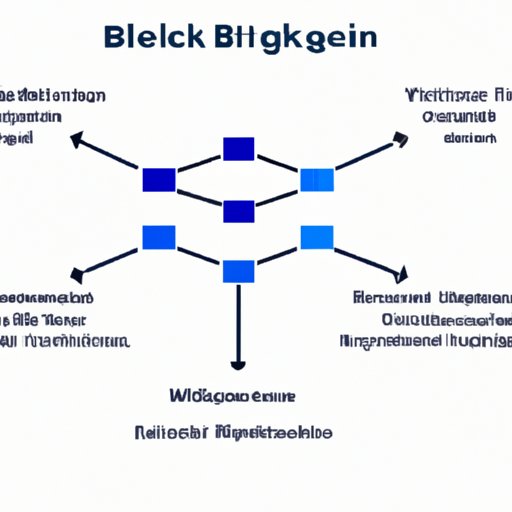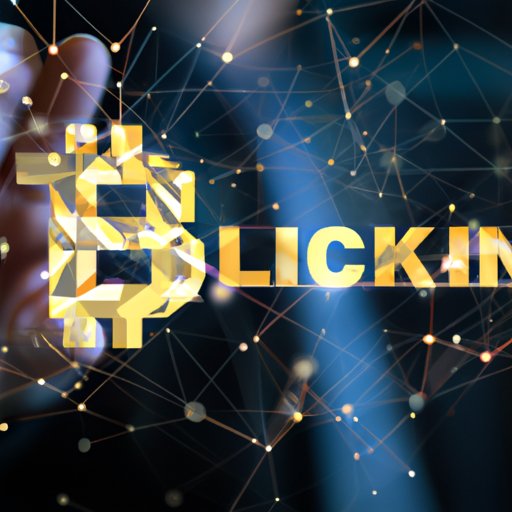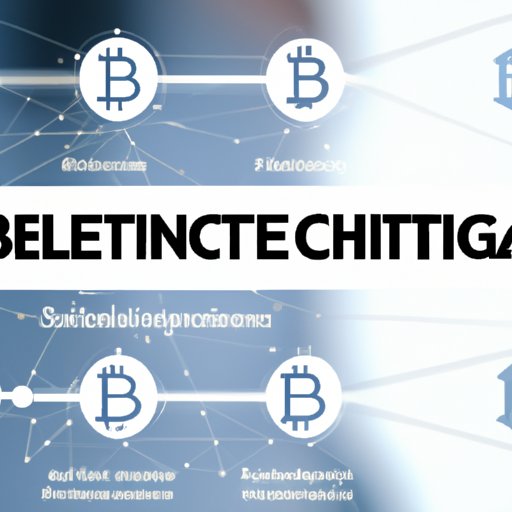Introduction
Bitcoin is a digital currency that has revolutionized the way we think about money. It is powered by a revolutionary technology called blockchain, which is a secure, public ledger of all transactions that have ever taken place in the network. By using blockchain, Bitcoin is able to provide users with a safe and reliable way to send and receive payments without the need for a third party or intermediary.
However, there is still a great deal of confusion surrounding both Bitcoin and its underlying blockchain technology. This article will explore what Bitcoin blockchain is, how it works, and the many ways it can be used by businesses and individuals.

Explaining the Basics of Bitcoin Blockchain
In order to understand Bitcoin blockchain, it is important to first understand what a blockchain is and how it works. A blockchain is a decentralized, distributed ledger that records all transactions that take place within the network. Each transaction is stored in a “block”, which is then connected to other blocks in a chronological chain. This chain of blocks is known as the “blockchain”.
Bitcoin uses this blockchain technology to record and verify all transactions that take place within its network. Every time a user sends or receives Bitcoin, the transaction is recorded and added to the blockchain. This information is then shared with the entire network, allowing everyone to see and verify the transaction.
The benefits of using a blockchain include increased security, improved transparency, efficient processing, and lower transaction fees. By using blockchain technology, Bitcoin is able to provide users with a secure, fast, and inexpensive way to send and receive payments.

Understanding What Sets Bitcoin Blockchain Apart
One of the main features that sets Bitcoin blockchain apart from other blockchains is its use of Distributed Ledger Technology (DLT). DLT is a type of database that is spread across multiple computers, rather than being stored on a single server. This makes it much more secure and resistant to hacking or tampering.
In addition, Bitcoin is also decentralized, meaning that it is not controlled by any one central authority. Instead, the network is run by its users, who are responsible for verifying and recording all transactions. This decentralization also provides an extra layer of security, as no single entity can manipulate or control the network.
Finally, Bitcoin blockchain is also immutable, meaning that once a transaction has been added to the blockchain, it cannot be changed or reversed. This makes it impossible for anyone to alter or delete existing transactions, ensuring that all transactions remain secure and accurate.

Analyzing the Impact of Bitcoin Blockchain on the Economy
The use of Bitcoin blockchain is having a significant impact on the global economy. One of the most notable effects is increased liquidity. By providing users with a secure and reliable way to send and receive payments, Bitcoin has greatly reduced the cost and time associated with international payments.
In addition, Bitcoin is also helping to boost financial inclusion by providing access to banking services to those who may not have previously had access. By making it easier to send and receive payments, Bitcoin is helping to bridge the gap between the traditional banking system and the unbanked population.
Finally, the use of Bitcoin blockchain is also helping to enhance global trade by reducing transaction costs and increasing transparency. By removing the need for intermediaries, Bitcoin is making it easier for businesses to conduct international transactions and reduce their expenses.
Looking at How Bitcoin Blockchain is Used by Businesses and Individuals
The use of Bitcoin blockchain is not limited to just payment solutions. In fact, businesses and individuals are finding numerous ways to utilize the technology. These include the use of smart contracts, digital asset management, and even data storage.
Smart contracts are self-executing contracts that are stored on the blockchain. They allow two parties to enter into an agreement without the need for a third party or intermediary. This can help to reduce costs and streamline processes.
Digital asset management is another popular use of Bitcoin blockchain. By using the blockchain, businesses and individuals are able to securely store and transfer digital assets such as documents, images, and videos.
Finally, data storage is becoming increasingly popular as more people look for ways to store and back up their data in a secure and reliable manner. By using the blockchain, users are able to store their data on a secure, distributed ledger that is virtually impossible to hack.
Comparing Different Cryptocurrencies and Their Blockchains
Although Bitcoin was the first cryptocurrency to use blockchain technology, there are now many different cryptocurrencies that use blockchain. Ethereum, Litecoin, and Ripple are three of the most popular alternatives.
Ethereum is a decentralized platform that allows developers to build and deploy decentralized applications. It also uses smart contracts to facilitate online agreements and transactions.
Litecoin is a peer-to-peer cryptocurrency that is designed to be faster and cheaper than Bitcoin. It also uses blockchain technology to securely store and transfer funds.
Finally, Ripple is a real-time payment protocol that is designed to make international payments faster, cheaper, and more secure. It is used by banks, financial institutions, and businesses around the world.
Exploring Potential Uses for Bitcoin Blockchain in the Future
Despite the numerous benefits of Bitcoin blockchain, its potential uses are far from being fully realized. In the future, the technology could be used for a variety of applications, including supply chain management, identity verification, and data storage.
For example, Bitcoin blockchain could be used to track the movement of goods throughout the supply chain. This would allow businesses to easily monitor the location and condition of their products, reducing costs and improving efficiency.
In addition, Bitcoin blockchain could also be used for identity verification. By using the blockchain, businesses and individuals could securely store and share personal data, making it easier to verify identities and reduce fraud.
Finally, Bitcoin blockchain could also be used for data storage. By storing data on the blockchain, users could ensure that their data remains secure and immutable.
Conclusion
Bitcoin blockchain is a revolutionary technology that is changing the way we think about money and payments. It provides users with a secure, transparent, and efficient way to send and receive payments, while also offering numerous benefits for businesses and individuals.
In addition, Bitcoin blockchain could also be used for a variety of other applications, such as supply chain management, identity verification, and data storage. As the technology continues to evolve, these potential uses could become a reality in the near future.
Overall, Bitcoin blockchain is a powerful technology that is transforming the way we view money and payments. Its potential uses are only beginning to be understood, and its impact on the global economy is likely to continue to grow in the years to come.
(Note: Is this article not meeting your expectations? Do you have knowledge or insights to share? Unlock new opportunities and expand your reach by joining our authors team. Click Registration to join us and share your expertise with our readers.)
